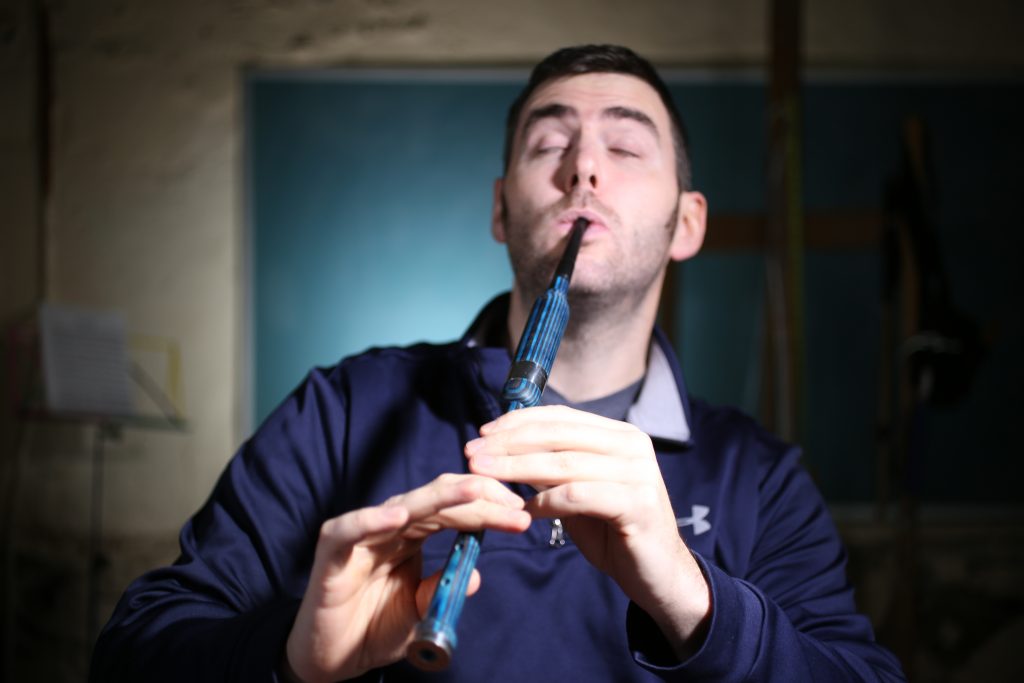Are Your Bagpipes a Money Pit?

If you are serious about playing pipes, how much should you consider spending on piping? Chanters, reeds, pipe bags, and private instruction all add up. Is the cost reasonable?
Andrew shares how he thinks about his bagpipe expenditures. He explains what is worth the money and when it’s not. Frugal pipers (aren’t we all) need to hear this!
Click here now to listen to this as a podcast. Find the Piper’s Dojo Audio Experience podcast on Apple iTunes, SoundCloud, Spotify, Google Podcasts -- or wherever you listen to your podcasts.Listen to This As a Podcast
Video Transcription:
Andrew:
You can't pipe without spending money. The good news about a chanter is it will be 10 years before it's obsolete. I think you maybe need to think of it that way, right? I do think that's a good way to think about it. My G1 chanter's going to cost me 150 bucks. Okay, that's $15 a year, right? Think of it that way. You invest in the chanter and it's 15 bucks a year to have a really nice chanter. Then, 10 years from now, it'll be time for a new one.
Then, the same with the drone reeds, but it's probably a shorter time span. A set of synthetic drone reeds, it'll be three years before you probably need a new set, so set of Ezeedrones is 90 bucks, so that's 30 bucks a year for your drone reeds. That's just the way that it is. Then, chanter reeds, maybe you go through two or three a year, but that's the other way. I buy a chanter reed for 20 bucks, that's going to last me, let's call it four months. That's 60 bucks a month for your chanter reed.
Then, the pipe bag, if you aren't actually genuinely poor, you want to buy a Bannatyne, because you're going to spend, what is it, 200 bucks for a good Bannatyne, right? Then, the Bannatyne can last you 5-10 years. You can divide that in. You need to think of it that way, which is, you have to divide the lifespan into the price. Then, you'll find that, actually playing your bagpipes, if you're actually serious about playing, you'll find that it costs, I don't know, 500 bucks a year to maintain your instrument.
Carl:
Then, you go out and get two gigs pay you 250 bucks each and you've paid for your habit.
Andrew:
Yeah, for sure. No, that's a great point. Then, the same will go for instruction. It's a same mentality I would take towards instruction, which is, this is what people think I say, which I don't, but don't get private instruction unless you are well-prepared for that lesson. If so, you'll find private instruction is an adequate bang for the buck, but don't get weekly lessons, folks. If you don't have time to play your pipes except for once a week, private lessons, really bad idea, right?
Carl:
It's just a waste of money.
Andrew:
Yeah. Then, meanwhile, if you are the type of person that religiously goes home the night after the lesson and puts in an hour on the stuff that your teacher taught you and then another hour the next day and then maybe you take a day off, but then it's another hour and another hour and another hour, then you're the type of person who can justify getting private instruction, but those people are rare, right? I think what I would really recommend just from a budgetary standpoint is find ... Dojo's $1 a day for our premium. If your practice sessions are worth a dollar a day, then that's the right investment for you. I think the average Dojo U member probably needs to be a member and then find private instruction once a month, let's say. Maybe a two-hour lesson with a guru once a month and then like that, that's a good balance I think for everyone. I made up my own topic there and I jammed on it, which is piping costs money, but it doesn't cost insane amounts if you think about it the right away.
Carl:
Mm-hmm (affirmative). Agreed.
Andrew:
Have a Dave Ramsay envelope for piping. When I get gigs, this is what I tell people. Let's say you want me to play a gig, it's $300 for me to do the gig or $225 if you can pay me in cash. Then, most people are like, "Oh, cash is no problem, save a lot of money. I don't have to pay tax in that money." It goes in my piping envelope. This isn't actually true anymore, but before I owned a bagpipe business, it would go in the envelope. Now, that 225 bucks, maybe you'd do a gig couple times a month and that's my bagpipe envelope. It keeps me operating at even keel. Then, maybe you have a second envelope where 20% of everything you put in the main envelope goes in that one. Then, over three or four years, you get a thousand bucks built up in that and that's your down payment on your new pipes you always wanted.
Enjoying this content and want to try Dojo U? Try our Premium Membership for a full month for just one dollar by clicking here now!Try a Dojo U Premium Membership for $1






Responses